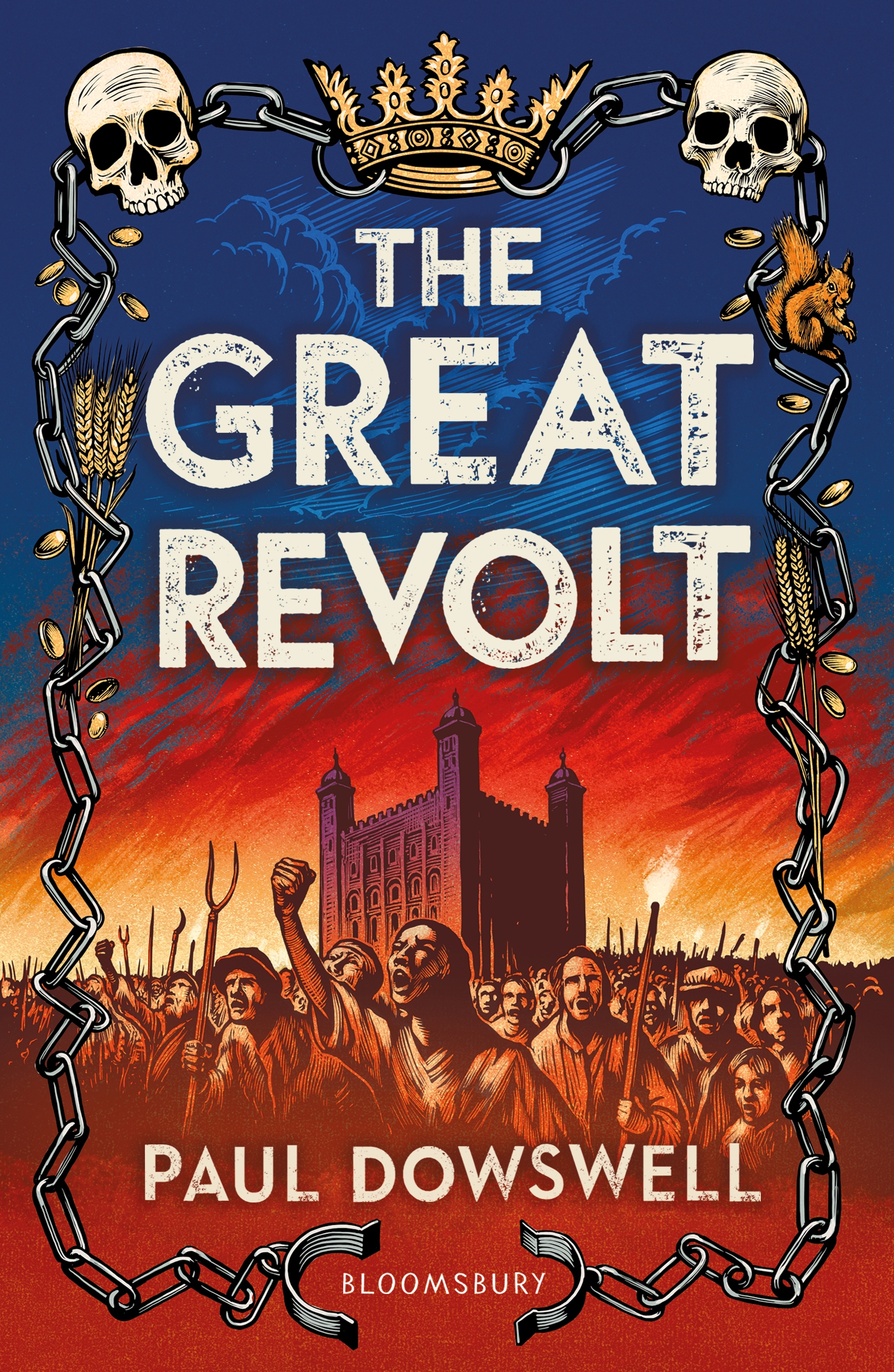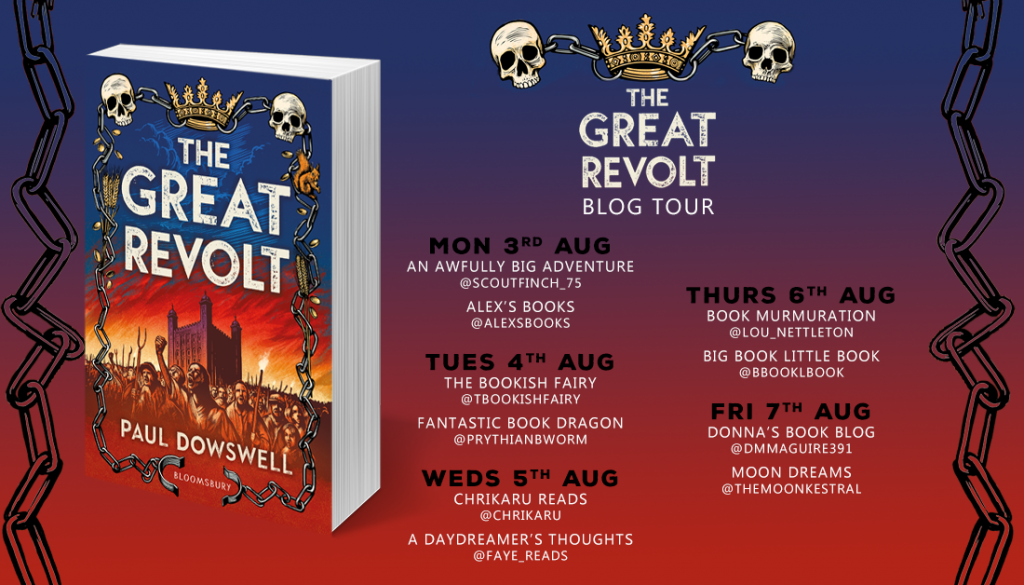The Great Revolt

Paul Dowswell
It’s 1381 and the king, Richard II, has imposed a new tax on the people. In the village of Aylesford, Tilda and her ploughman father were already struggling to make ends meet. As serfs they have no rights to move freely or earn wages for their work. Tilda is desperate for a better life than the village can offer, so when the villagers begin to rebel she is swept up in the excitement. Tilda and her father travel to London with the others to petition the king, but the peaceful rebellion they hoped for soon ignites into violence, mayhem and treachery. Tilda’s fight for a better life is only just beginning… This page-turning adventure sheds new light on a period of history which is covered in the KS3 curriculum, and will have readers gripped from start to finish.
Author Interview
What is your favourite thing about writing books?
I write historical fiction and my favourite thing about writing these books is finding out about a particular era of history and then trying to bring it to life for the reader. The trick is to weave the historical detail into the story without drawing attention to it. It’s the wallpaper in the background. But while it’s important to get your historical detail right, you have to be careful not to let it take over your story. The main things, as in any story, are your characters and what is happening to them.
Who is your favourite character in your book and why?
‘The Great Revolt’ is told through the eyes of two main characters – a peasant girl called Matilda Rolfe, and Guy de Clare, a young courtier who works alongside England’s king, Richard II.
Matilda, who is known as Tilda, is 14 and her life is mapped out before her – dull, exhausting farm work, then marriage to a boorish village boy and as many babies as possible before it kills her. As it says in the book: ‘Tilda never felt excited about living in Aylesford. Outside their door there was a cow and a horse. And a big puddle…’
Tilda is a bright, brave girl and she quite rightly feels she ought to have a better chance than this in life. Escaping to London broadens her horizons and gives her opportunities she never thought possible.
I like my posh boy Guy de Clare, too. He’s all at sea in the royal court and worried about doing the wrong thing. But he’s got his feet on the ground, and refuses to see the peasants as little more than dumb animals.
How did you research your book?
If you write historical fiction you owe it to your reader to stick to the known historical facts. So for this story on the Peasants’ Revolt I did a lot of research on the subject. I read books, I watched documentaries, and I visited museums. I also like to walk the same streets as my characters – something that was surprisingly easy to do in London, the central focus of the revolt. The buildings of old London may have changed but the street names and locations are remarkably similar.
Are you a plotter or a pantser?
I always plan my stories in detail – partly to ensure I stick with a proper chronology of known facts and partly to save me from weeks of wasted work, haring off in a plot direction than doesn’t actually work.
If you could live in any fictional world, which would you choose and why?
I’d like to live in the land of Nog – ‘where the black rocks stand guard against the cold sea’. Oliver Postgate’s 1960s children’s TV series ‘Noggin the Nog’ is set in a magical Viking Kingdom, full of quirky characters inspired by the Lewis chessmen. The music, by Vernon Elliot, is also haunting and beautiful.
If you could befriend any fictional character, who would you choose and why?
Graculus the Cormorant – a talking bird from Noggin the Nog. He’s very wise and a bit cranky. Def. a good character to have on your side. I’m not one for tattoos but if I had one it would be of Graculus.

Publisher: Bloomsbury
Publication Date: 6th August 2020
Format: Paperback
Pages: 288
Genre: Historical
Age: Middle Grade
Reviewer: Blue
Source: N/A
Hidden Intentions
You May Also Like

